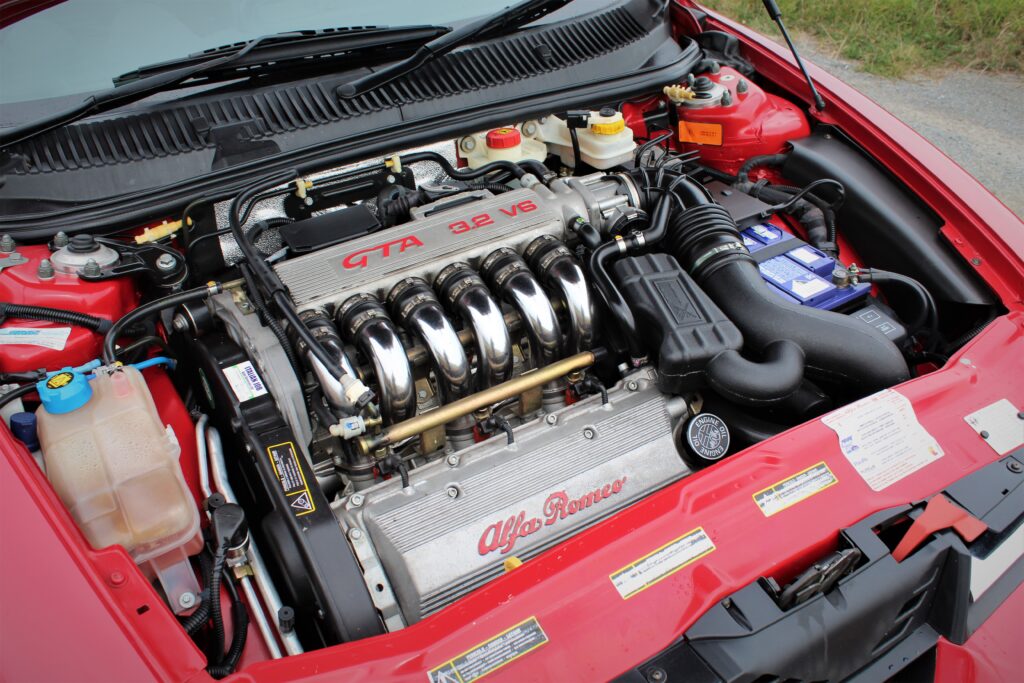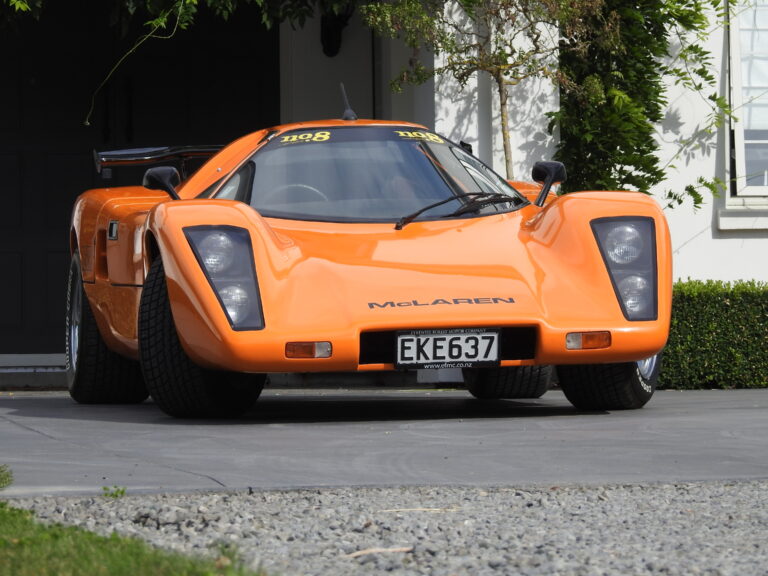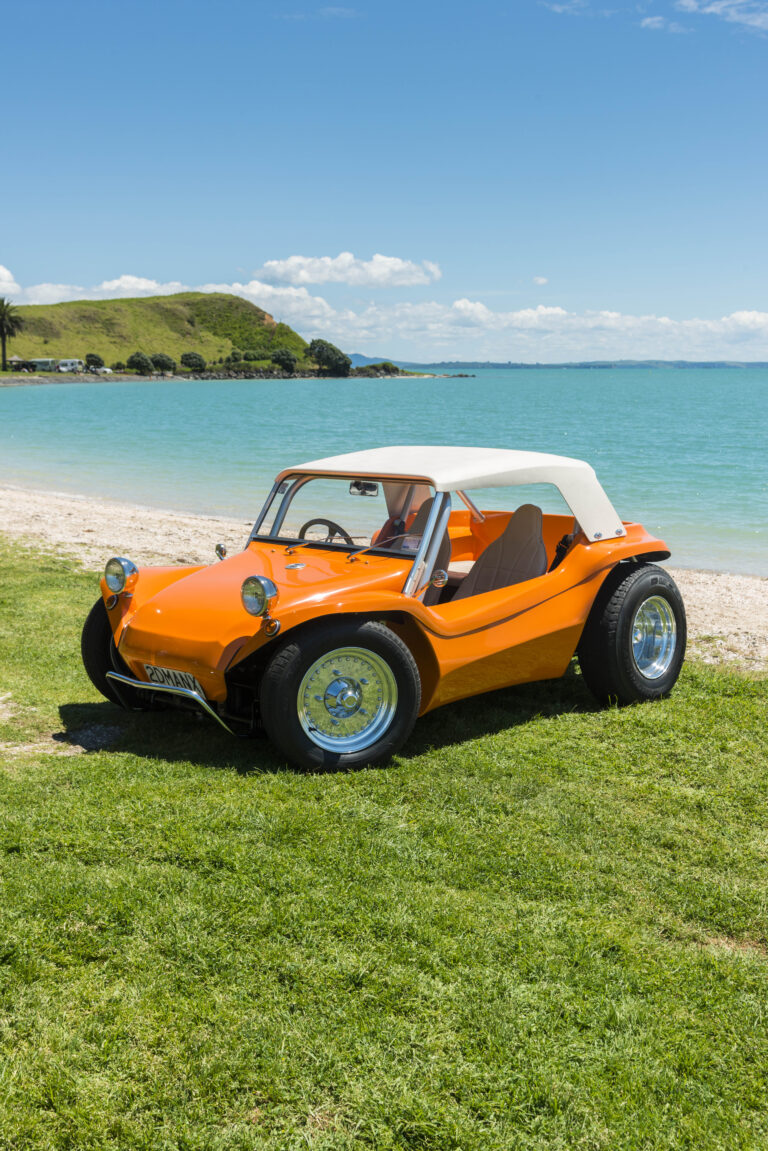Alfa Romeo’s elegant 156 achieved a timeless aesthetic appeal, if not great residual values, but the GTA treatment adds a huge slice of extra spice
By Ben Selby
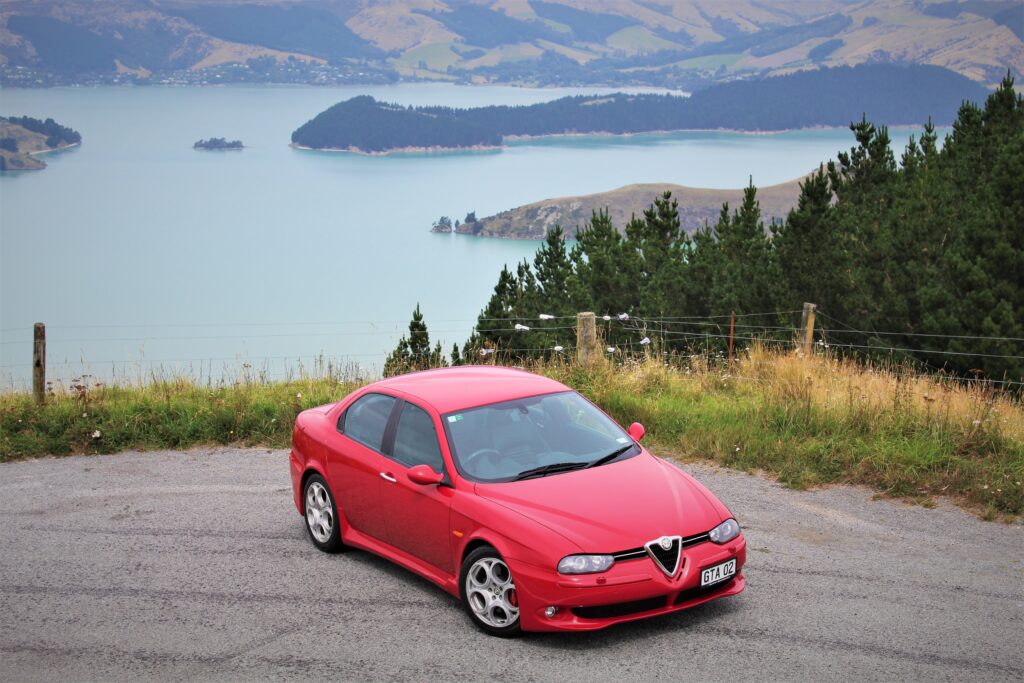
When it comes to discussing automotive brands with the habit of getting under your skin, the words Alfa Romeo will be among the first uttered. Alfa enthusiasts, or Alfisti to use the correct term, are some of the most passionate car enthusiasts around. They resonate with the brand’s rare talent for building cars with characterful engines, engaging handling, and beautiful lines at much less than exotic prices. This passion for Alfa’s vast automotive portfolio is only heightened when you mention the letters GTA.
An Alfa with a GTA badge has always been a very special thing. Standing for Gran Turismo Alleggerita, or Lightened Grand Tourer, it is always reserved for the models in Alfa’s range that champion power, light weight, and race car-like dynamics over just about everything else. From the early Series 105 Giulia GTA touring cars, to the latest limited run hardcore GTA rendition of the current Giulia Quadrifoglio saloon, it’s a nameplate with plenty of heritage.
This brings us on to the 156 GTA you see here. During the early noughties, Alfa was keen to give their strong-selling 156 saloon some extra street cred and performance tweaks to keep pace with the likes of the BMW M3 E46 and Audi S4.
The 156 had already forged its own identity next to its German rivals with its sharp styling, elegant driver-focused interior, and those funky hidden rear door handles. So, when the covers came off the GTA version at the Frankfurt Motor Show in September 2001, there was a tonne of interest from the faithful and consumers alike.
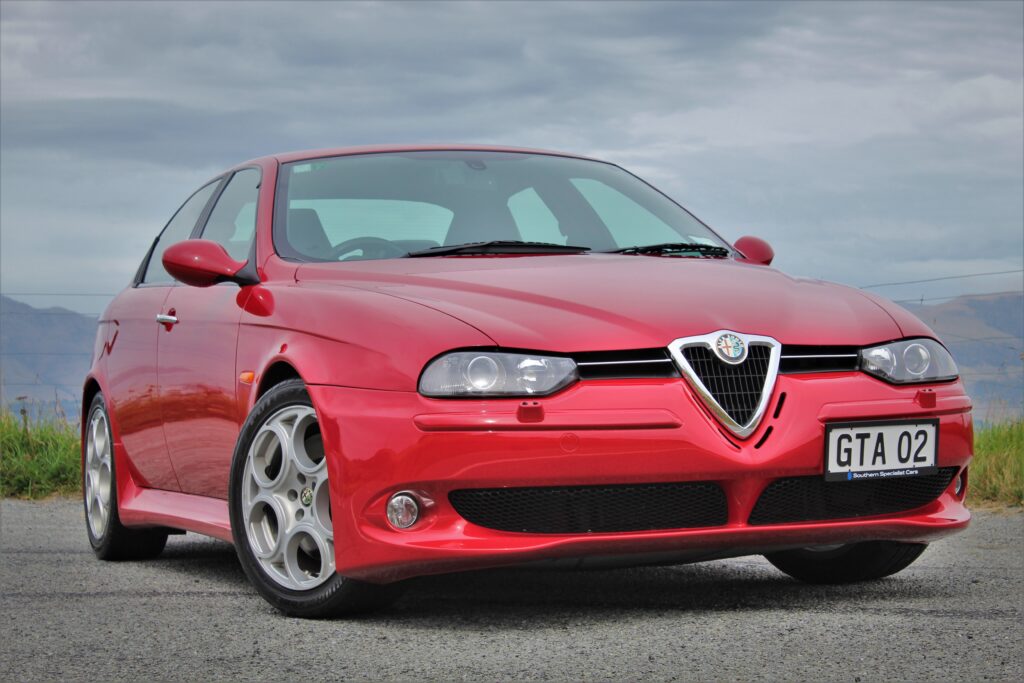
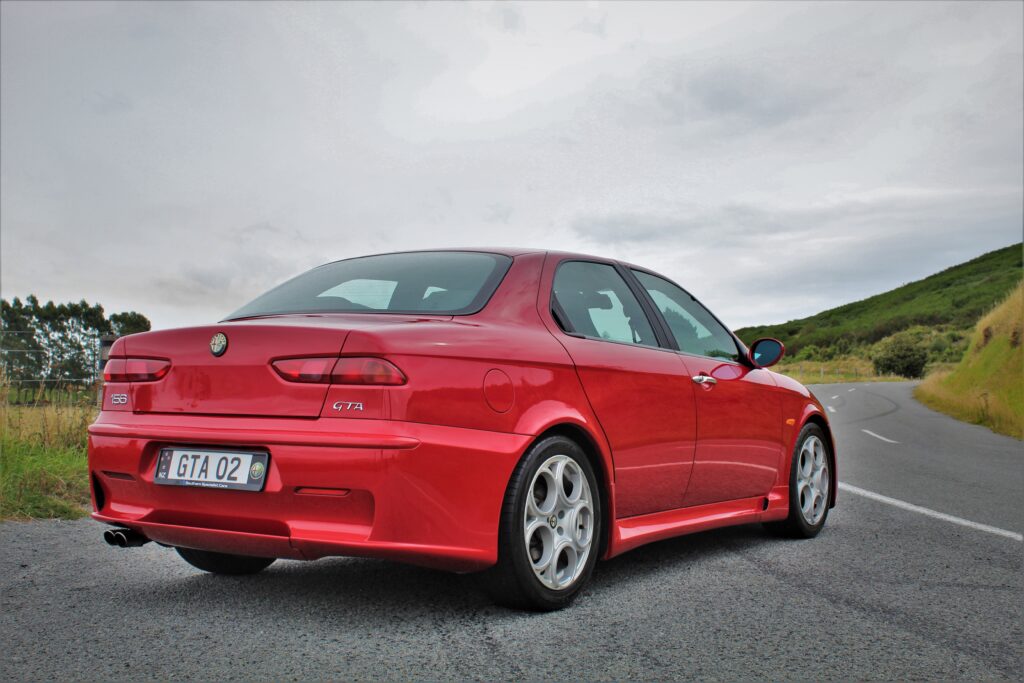
The works
Alfa wanted the 156 GTA to stand apart as something special next to the regular 156. The GTA got its own production line and would be rather exclusive. Basically, only the most dyed-in-the-wool Alfa fans would get a look in. The GTA was available as a Berlina (saloon) or Sportwagon with more than a smattering of performance upgrades over the standard car.
The biggest of these was slotting in the latest incarnation of the now legendary Giuseppe Busso-designed V6. In 3.2L guise, Alfa managed to extract 184kW of grunt and 300Nm of torque. Despite the lightweight connotations of the emblem, this version of the Busso V6 was actually 55kg heavier than the one before it. Buyers could opt for either a six-speed manual or Selespeed automatic transmission and drive still went through the front wheels.
Alfa garnished the GTA with plenty of go-faster-looking styling tweaks, like a bespoke set of headlights, additional scoops and spoilers front and rear, side sills, and a handsome set of 17-inch Alfa ‘Teledial’ alloys. The addition of lowered springs gave this 156 a more menacing stance. With the increase in performance came an increase in the stopping power.
The GTA got 305mm Brembo discs front and 276mm at the rear. While the interior hadn’t changed much over the standard car, a quick turn of the ignition key was all that was required to convince the driver that the GTA was an entirely different beast.
The 156 GTA was built in limited numbers to ensure exclusivity, with a snip over 1900 Berlinas and 1678 Sportwagons built before production ended in 2005. During that time the regular 156 was given a styling upgrade, but the GTA still retained the lines penned by Walter Da Silva. Only a handful ever made it to New Zealand in right-hand drive. Due to its rarity, much like its 147 GTA hatch counterpart, the 156 GTA is hot property right now with all manner of Italian car fanatics.
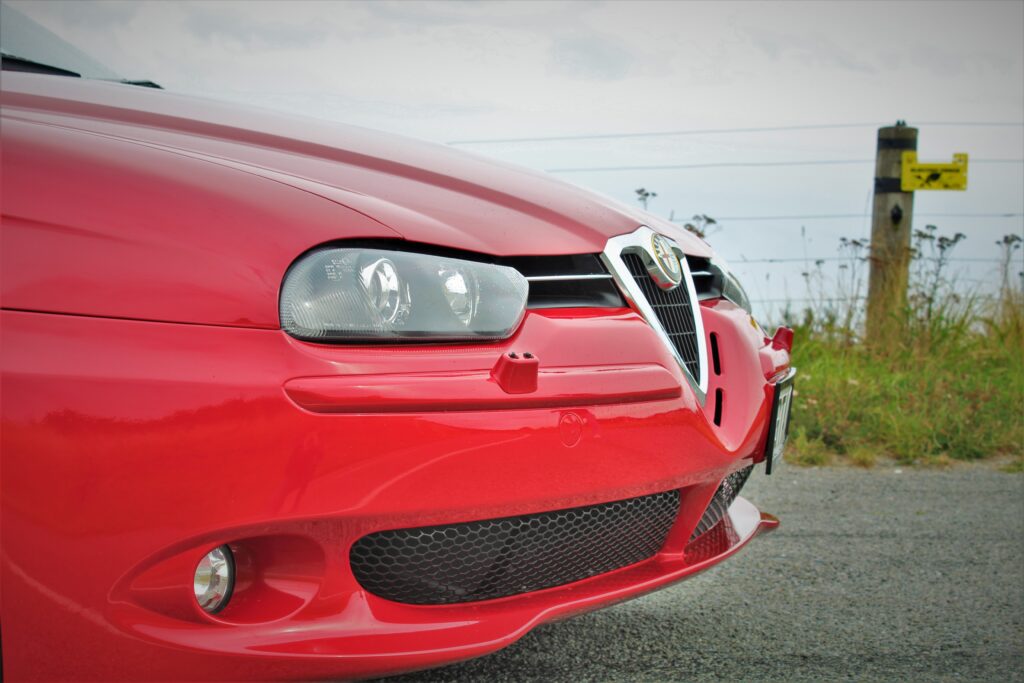
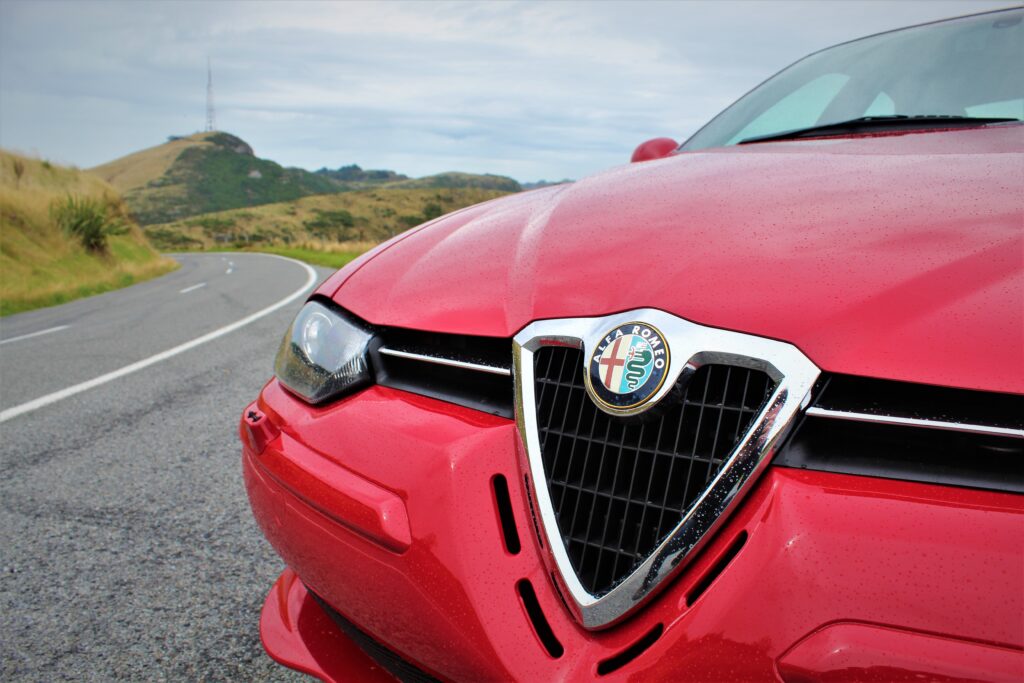
Holiday romance
Property investor Karl Grant is such an Italian car fanatic and owns this immaculate example. “I just love the passion and flair of Italian cars. The Italians bring their culture into their cars, and it shows. It’s the design and attention to detail. Sure, there are flaws, but they are works of art,” he says with a smile.
His car collection also includes a Maserati GranSport and a Ferrari 458, but the 156 GTA has been on his bucket list ever since his early twenties. “It all started when I worked in Christchurch as an Italian car mechanic. I would work on Fiats and Alfas, including the 156. I would take them out on 10- to-15-minute road tests and my obsession started there. I stayed there throughout my twenties and got to work on a few 156 GTAs,” he says.
How this 156 GTA came to find its way into Karl’s garage is a story worthy of an Italian pantomime. “It started when I was on holiday with my partner at Mt Cook. We have a rule. When on holiday, no looking online for cars or property for sale. However, I was still able to get notifications on my phone, and this GTA came up for sale in Auckland,” Karl says.
“I had been waiting a while for one to come up for sale and I wasn’t about to let this one go. We had had a number of beers prior to this, and I told my partner about the car. She said go for it. I gave her a crash course on the GTA and she called the dealer. She was so good she even managed to get us a discount. Before we knew it, we pulled the trigger, paid the deposit, and the car arrived in Christchurch a week later!”
With 66,000kms on the clock, Karl’s 156 GTA spent most of its time in a private collection. Inside and out, it looks, feels, and even smells like it just left the factory. That blood red coat of paint glistens like new, as does those iconic chromed inlet pipes for that sweet Busso V6. In fact, that engine is one of the chief reasons why Karl loves the GTA. “For me it’s the sound of that Busso V6 and the six-speed manual gearbox. It feels like a little race car,” he says.
With the Busso all warmed up and eager to go, it was time to play. The driving position is typically Italian. The steering wheel comes out at you on an angle, resulting in those with shorter arms having to reach further ahead. However, you quickly forget this the moment you select first and get going.
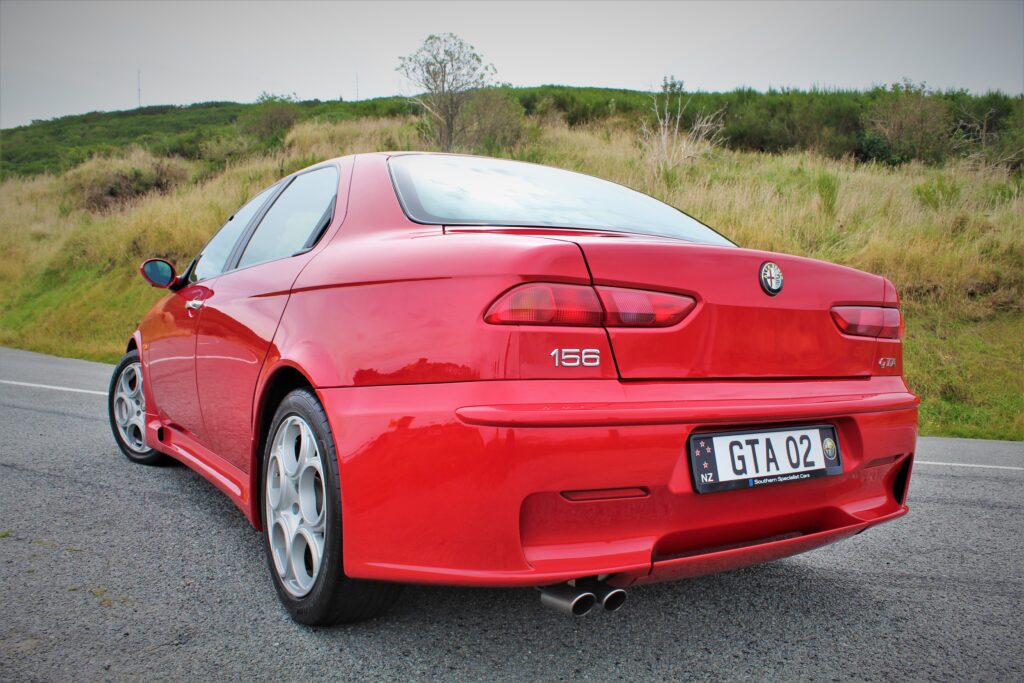
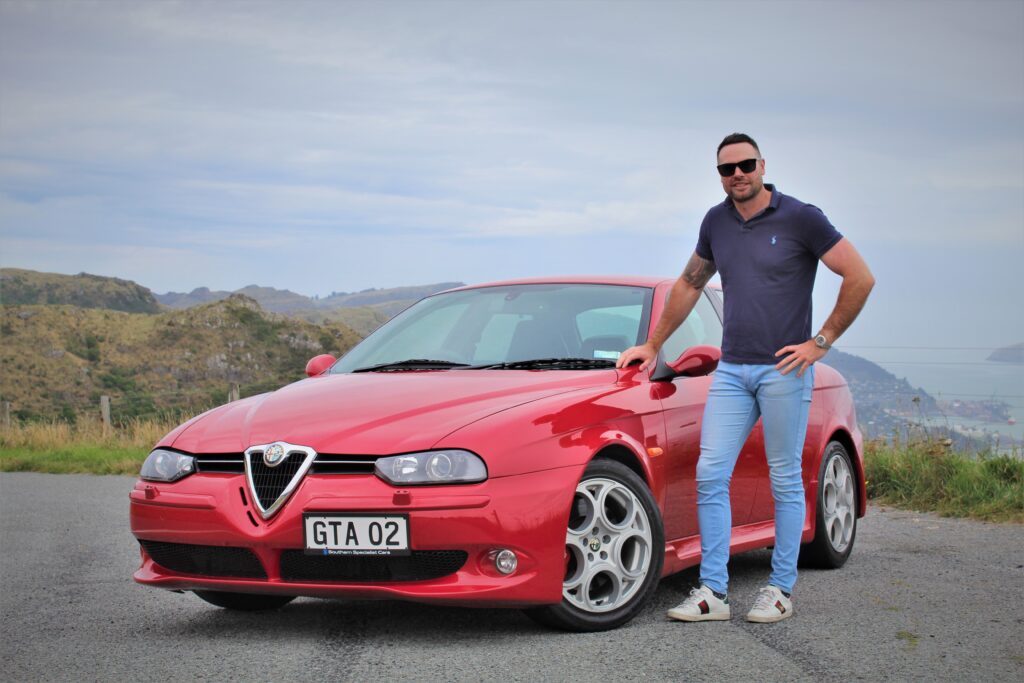
Relishing the road
The 156 GTA constantly dares you to drive it hard. Apply the merest suggestion of throttle and you dart forward like a terrier on caffeine. Between 2500 and 5000 rpm, the GTA is still quick even by today’s standards. You do feel the bumps, but I kind of expected that anyway. While there are four doors and you could quite easily use this as daily transport, it’s not really a town car. Even Karl admits the turning circle isn’t the greatest.
This is no real hardship, though, especially when you point that handsome Alfa conk towards some bendy tarmac. The venue for our little GTA escapade was the road back to Christchurch via Governors Bay and Dyers Pass. Many a car enthusiast has frequented this route so it was only natural that the GTA had the chance to let its hair down here.
Here, the GTA came into its own. The steering is almost telepathic. A quick flick left or right, and you are changing direction almost instantly. Push on, and you are pinned back in the seat as the revs rise and the noise of that glorious Busso V6 grows louder and louder.
Press on in a corner, and you do feel a build-up of torque steer. According to Karl, this is a common trait. He also confessed to finding this out during his mechanic days at the wheel of another high-powered, front wheel drive Alfa. “It was a GT 3.2 manual. I put my foot down on a narrow street in Christchurch. The torque steer nearly sent me into a parked car,” he says.
While I had no intention of recreating this experience, it wasn’t long before the GTA was devouring corners with considerable ease. The six-speed manual box was silky smooth through the gears and the GTA’s Bridgestone Potenza rubber gave a phenomenal amount of grip. Some may argue that being front-wheel drive is a hindrance when driving enthusiastically. However, after an afternoon with a 156 GTA, one would struggle to sympathise with this view.
It certainly isn’t hard to view the Alfa Romeo 156 GTA as a modern classic — one of the last analogue hardcore sports saloons which puts an engaging drive first and foremost rather than trying to blind us with mega power and technology.
Alfa Romeo is all about the drive, and the 156 GTA delivers on that score. Big time.


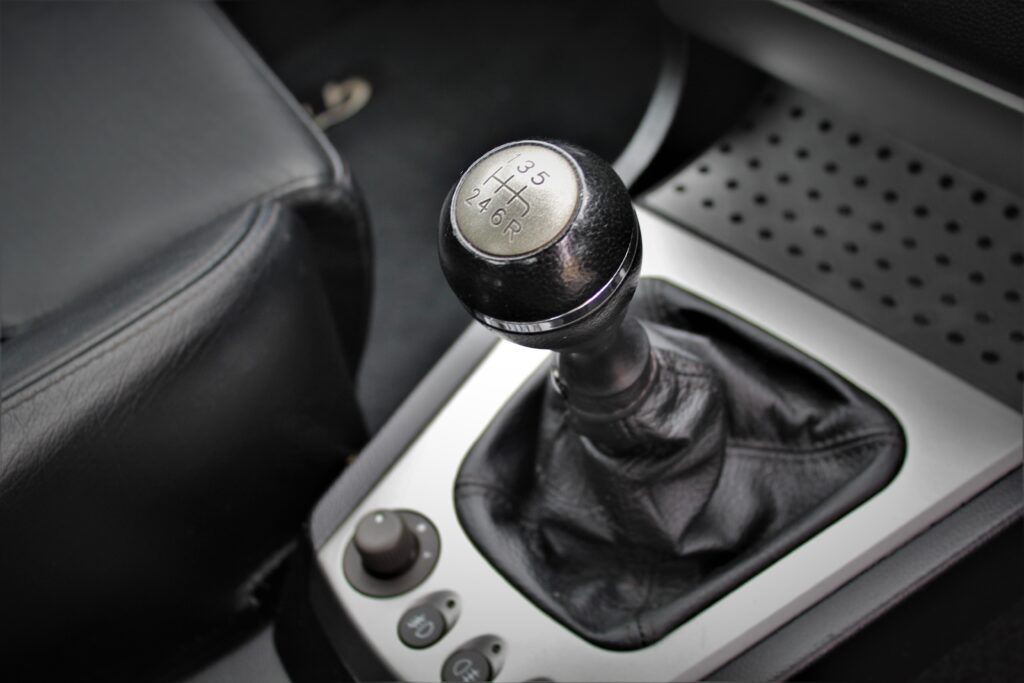
Specifications – 2003 156
Engine – Transverse 2492cc V6
Bore/stroke – 88mm/68.3mm
Valves – 24, overhead; four valves per cylinder
Comp. ratio – 10.3:1
Max power – 189bhp 141kW) at 6300rpm
Max torque – 161ft·lb (218Nm) at 5000rpm
Fuel system – Bosch Motronic ME 2.1
Transmission – 6-speed manual, FWD
Suspension – F/R: Fully independent with double wishbone/McPherson rear struts with anti-roll bar
Brakes F/R 284mm vented discs/251mm discs
Tyres: 205/60R15
Dimensions:
Length – 4430mm
Wheelbase – 2595mm
Width – 1745mm
Track, F/R – 1511mm/1498mm
Height – 1415mm
Weight – 1430kg
Performance:
0–100kph – 7.3 seconds
Top speed –230kph
Specifications – 2003 156 GTA
Engine – Transverse 3179cc V6
Bore/stroke – 93mm/78mm
Valves – 24, overhead; four valves per cylinder
Comp. ratio – 10.5:1
Max power – 184kW (247bhp) at 6200rpm
Max torque – 221ft·lb (300Nm) at 4800rpm
Fuel system – Bosch Motronic MPI
Transmission – 6-speed manual, FWD
Suspension – F/R: Fully independent with double wishbone/McPherson rear struts with anti-roll bar
Brakes F/R305mm vented discs/276mm discs
Tyres: 225/45R17
Dimensions:
Length – 4430mm
Wheelbase – 2595mm
Width – 1765mm
Track, F/R – 1522mm/1509mm
Height – 1402mm
Weight – 1485kg
Performance:
0–100kph – 6.3 seconds
Top speed –250kph
Besides the bigger engine the GTA sports a front air dam and spotlights, skirts and twin tailpipes there are 17-in alloys, big Brembo brakes, alloy pedals, new wheel, sportier front seats, extra air bags, different instrument surrounds and centre console and an 11-speaker Bose sound system for when that engine note gets boring, if that’s even possible.
